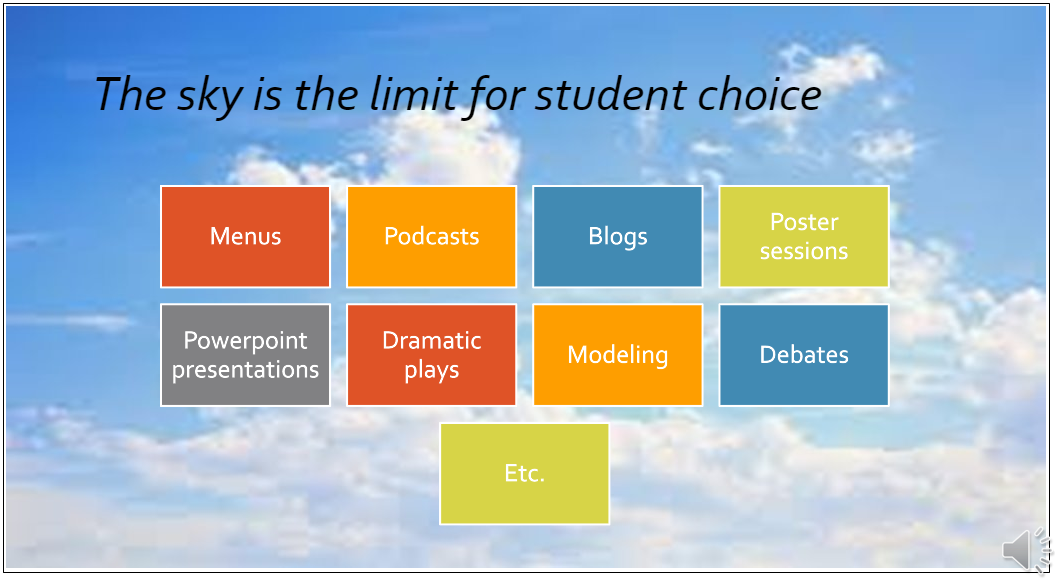 Universal Design for Learning is intended to create access for all learners to meet each student where they are rather than to implement a "one size fits all" approach to classroom learning. As a result of applying UDL principles, educators will create learning environments that are conducive to a wide variety of student learning styles, modalities, needs, etc. In the process of such implementation, educators will establish quality learning environments.
Universal Design for Learning is intended to create access for all learners to meet each student where they are rather than to implement a "one size fits all" approach to classroom learning. As a result of applying UDL principles, educators will create learning environments that are conducive to a wide variety of student learning styles, modalities, needs, etc. In the process of such implementation, educators will establish quality learning environments.
At the core of universal design is the opportunity to address disciplinary instruction, thinking, learning, and application in a blended (or interdisciplinary) approach that reflects 21st century teaching, learning, and work. By placing the learner at the center, the instructional planning focuses on the subject of the learning and develops all of the disciplinary tools necessary to effectively apply the learning for deep understanding and retention of transferable knowledge. After all, we are preparing today's students to do jobs that have not yet been invented.
We suggest keeping a journal to record the discussion prompts within the modules and videos, and your responses.
Watch this brief video
Introduction to Universal Design for Learning
- Module 1: Engagement
-
Engagement of students begins with interest and identity.
View this video to learn more about Interest (~ 18 ½ minutes)
- STEM Teaching Tools Practice Brief 89
JOURNAL: How do you learn about student interests? How do you adjust lessons to address student interest?
View this video to learn more about Identity (~ 6 ½ minutes)
Resources:
- Creating an Identity-Safe Classroom by Becki Cohn-Vargas, Dorothy M. Steele; Edutopia
- How to Create Identity-Affirming Opportunities by Jeanne Chowning, Hanako Osuga, Wanda Bryant, & Jason Foster; STEM Teaching Tools
- STEM Teaching Tools Practice Brief 89
- Module 2: Representation
-
A variety of learning styles requires various representations.
View this video to learn more about Representation (~ 19 ½ minutes)
:
JOURNAL: Reflect on one class you currently have or recently had. What are the learning styles preferred by the students? Create an inventory of learning experiences that reflect the variety of learning styles.
- Module 3: Action and Expression
-
Providing students with voice and choice allows for action and expression of their learning.
View this video to learn more about Action and Expression (~ 5 ½ minutes)
:
JOURNAL: How might you incorporate some of these choices in your curriculum? Is there one you have not tried?
- Wrap it Up
-
Equitable access is achieved by implementing engagement, representation, action and expression.
View this video to learn more about Equitable Access (~ 4 minutes)
:
Resources:
- Maine DOE MTSS webpage
- Maine DOE SEL4ME webpage
- Center for Teaching Innovation (Cornell University) webpage
- CAST webpage
JOURNAL: Define equitable access as it has been explained through UDL. Explain how engagement, representation, action, and expression support equitable access. What is one step you can take to enhance equitable access in your teaching community?
Now that you have completed Universal Design for Learning, please complete this short questionnaire to receive your contact hour certificate.
Return to the Interdisciplinary Instruction Professional Learning page